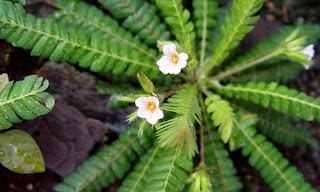
Ketepeng China
Scientific Name
Cassia alata L.
Region Name
Malays: Leaf Kupang
Sundanese: Ki manila
Java: Ketepeng Central China
Madura: Acong-acong
Ternate: Kupang, Kupang
Tidore: Tabakun
Classification
Division: Spermatophyta
Sub Division: Angiospermae
Class: Dicotyledonae
Nation: Resales
Tribe: Leguminosae
Surname: Cassia
Type: Cassia alata L.
Characteristics
Habitus: Perdu, height ± 5 m.
Trunk: woody, rounded, branching simpodial, dirty brown.
Leaves: Compound, pinnate, even, the child leaves eight to twenty-four pairs, the long round shape, the blunt edge, the edge of the flat, rounded base, 3,5-15 cm long, 2,5-9 cm wide, pinnate pertulangan, short shaft , green.
Flower: Compound, stem form, sharing five petals, three stamens, yellow, short peiindung leaves, orange, crown form of a butterfly, yellow.
Fruits: pods, long, quadrangular, ± 18 cm long, ± 2.5 cm wide, green when young dark brownish black.
Beans: An aspect of three-pointed, thin, young black and green after dark.
Roots: steep, branching, round, blackish.
Chemical Ingredients
China ketepeng leaves contain alkaloida, saponin, flavonoida, tannins and antrakinon.
Benefits
Ketepeng leaves China as a drug berhasiat scabies and malaria drugs.
For scabies medications used ± 10 grams of fresh leaves ketepeng china, washed and crushed to pulp. Then stick to the scab and wrapped with a clean cloth.



















